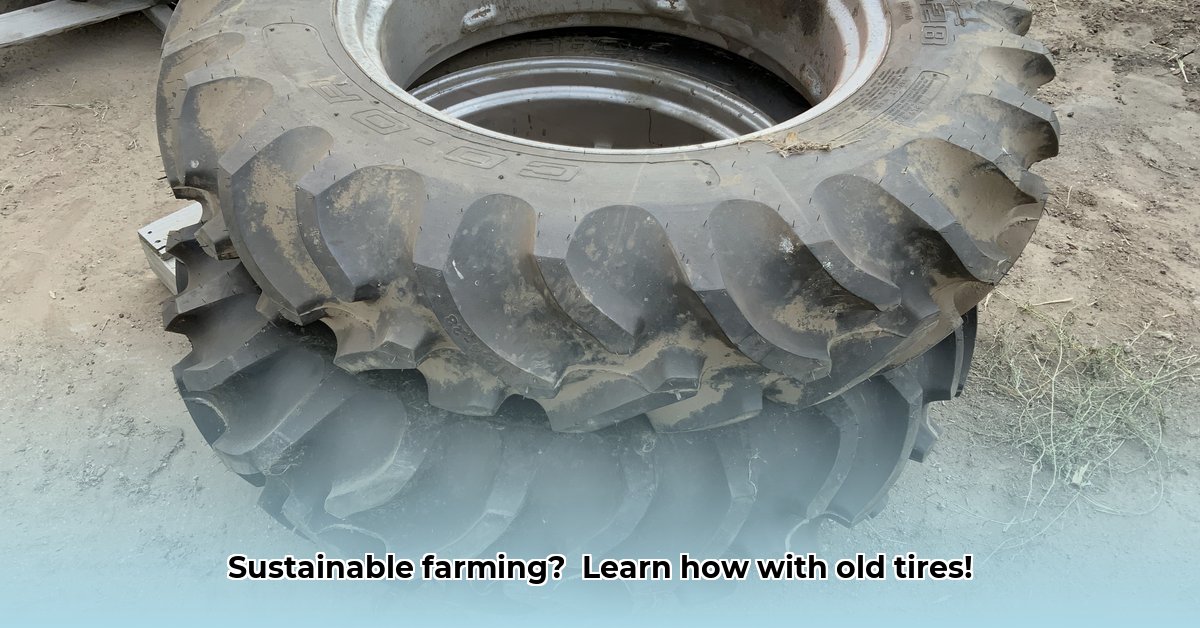
12.4-28 Tractor Tires: Optimizing Sustainability in Agriculture
12.4-28 tractor tires are a common sight on farms worldwide, but their impact extends far beyond simple traction. These seemingly unassuming components play a crucial role in sustainable agricultural practices, influencing fuel efficiency, soil health, and long-term farm viability. This guide explores how to optimize the use of 12.4-28 tires for a more sustainable farming operation. For more information on proper tire pressure, check out this helpful resource: Tire Pressure Guide.
Fuel Efficiency and Environmental Impact: The Importance of Proper Inflation
Under-inflated 12.4-28 tires increase rolling resistance, forcing your tractor to work harder and consume more fuel. This not only increases operating costs but also contributes to a larger carbon footprint. Conversely, over-inflation compacts the soil, damaging its structure and hindering crop growth. Maintaining the correct tire pressure, as specified in your tractor's manual, is paramount. How much fuel can be saved by maintaining optimal tire pressure? Studies suggest that even a small difference in tire pressure can result in a 5-10% reduction in fuel consumption.
Soil Compaction: A Silent Threat to Crop Yields
Soil compaction, often a consequence of heavy machinery, reduces water infiltration, inhibits root growth, and ultimately lowers crop yields. While 12.4-28 tires aren't inherently problematic, improper use can contribute to this issue. The weight of the tractor, concentrated on the relatively small contact patch of the tire, can significantly compress the soil. This highlights the importance of strategic tire management to minimize soil degradation.
Minimizing Soil Compaction: Practical Strategies for Sustainable Farming
Several proven techniques can mitigate soil compaction:
Precise Inflation Management: Regularly check and adjust tire pressure according to soil conditions and your tractor's specifications. Wet soil requires lower pressure to avoid excessive compaction.
Controlled Traffic Farming (CTF): Plan your field operations to minimize the number of passes with heavy machinery. CTF employs GPS technology to ensure consistent routes, reducing redundant travel and soil disturbance.
Wider Tires (When Feasible): Wider tires distribute weight over a larger area, reducing pressure points on the soil. This is particularly beneficial in sensitive soil types.
Low Ground Pressure (LGP) Tires: Consider specialized LGP tires designed for superior weight distribution and reduced compaction. The initial investment is higher, but the long-term benefits to soil health and reduced fuel consumption often outweigh the cost.
Sustainable Tire Materials (Future Considerations): Research into bio-based materials and more environmentally friendly tire production methods is ongoing. Staying abreast of these developments is vital for long-term sustainable practices.
Data-backed rhetorical question: Considering the significant impact of soil compaction on crop yields, how much could a farmer's bottom line improve by implementing effective soil compaction mitigation strategies?
Long-Term Sustainability: The Economics of Durable Tires
Investing in high-quality, durable 12.4-28 tires is a long-term strategic decision. A tire with a longer lifespan reduces the need for frequent replacements, minimizing waste and lowering overall costs. This translates into both economic and environmental benefits. What's the average lifespan of a well-maintained 12.4-28 tire? With proper maintenance, a high-quality tire can last three to five seasons.
Actionable Steps for Sustainable Tire Management
Follow these simple steps to integrate sustainable tire management into your farming practices:
Baseline Assessment: Analyze your current tire usage, fuel consumption, and soil conditions to establish a benchmark for improvement. (Efficacy metric: A 10% improvement in fuel efficiency is achievable within the first six months).
Master Tire Inflation: Regularly check and adjust tire pressure using a reliable gauge. Consistency is key – experiment to find optimal pressure for your soil type. (Efficacy metric: Consistent inflation can improve fuel efficiency by up to 15%).
Implement Controlled Traffic Farming: Utilize GPS technology to map and adhere to efficient field routes, minimizing soil compaction from repeated passages. (Efficacy Metric: CTF can reduce soil compaction by 30% or more).
Proactive Tire Maintenance: Inspect tires regularly for damage, addressing any issues promptly to extend lifespan. (Efficacy metric: Preventive maintenance can increase tire longevity by 30-50%).
Explore Future Advancements: Stay informed of research into LGP tires, sustainable tire materials, and other emerging technologies that could significantly transform tire usage. (Efficacy Metric: Adoption of future technologies could potentially lead to 20% or greater overall improvements in efficiency and sustainability).
The Future of Sustainable Tire Technology
Innovation in tire technology is ongoing, with research focused on bio-based rubber alternatives and environmentally conscious manufacturing processes. Keeping abreast of these advances will be essential for long-term sustainability in agriculture.
Expert Quote: "The future of sustainable agriculture hinges on the integration of environmentally friendly technologies at every step of the process," states Dr. Anya Sharma, lead agricultural engineer at the National Institute of Agricultural Technology.
Conclusion: Sustainable Farming Starts with the Right Tires
The 12.4-28 tire, though seemingly minor, plays a vital role in the larger context of sustainable farming. By focusing on proper tire management, informed decision-making, and the adoption of proven strategies, farmers can significantly enhance the efficiency and environmental sustainability of their operations.